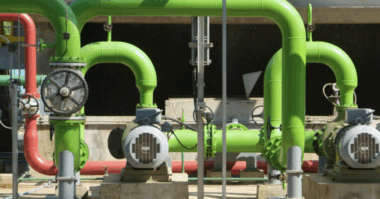Author: Engineered Software Inc.
1. Improve the Quantity of the Pumped Product: A system simulation can be used to identify how to increase production (yield) by identifying bottlenecks, fluid re-circulation within the system, or by identifying how to better utilize the existing equipment capabilities within the system. This delays or eliminates the need to make significant capital investments to support increasing product demand.
2. Improve the Quality of the Pumped Product: The quality of a pumped product can be impacted by the velocity/flow rate it travels through the system, the pressures it is exposed to, or the heat transfer which occurs into or out of the product. By analyzing these parameters, the quality of the pumped product can be improved.
3. Increase the Efficiency of the System: Pumps consume a significant percentage of the energy used within the facilities or industrial plants where they operate. They also use other resources such as water or chemicals when operating. Simulating the system can identify and improve areas where resources are wasted within a system, including identifying large differential pressures across control valves, pumps which are not sized appropriately, unnecessary re-circulation loops, or the unintended discharge of treated water to name a few.
4. Increase the Reliability of the System: System equipment such as pumps, control valves, and heat exchangers have optimal operating conditions. A system simulation can identify what conditions the equipment is (or would be) operating under and evaluate it in relation to the recommended operating conditions from the equipment manufacturer. Improving the operating conditions of system components reduces Mean Time Between Failures (MTBF) which reduces downtime, lost pumped product (due to downtime or contamination), and maintenance costs.
5. Improve System Safety: Fluid systems must adhere to OSHA safety requirements to responsibly manage caustic chemicals, prevent an uncontrolled release of fluid into the environment, prevent injury to plant personnel or damage to equipment, and in the design of process safety equipment within the system. A simulation can provide a predictive, “what-if” analysis tool to develop a robust Process Safety Management Program. Other industries, such as Water, Food & Beverage, or Pharmaceuticals, have additional regulations to ensure the pumped product is not contaminated. A system simulation can ensure that any system velocity, pressure, cleaning additive, or temperature requirements are met during operation, and evaluate the system’s Clean In Place (CIP) procedures.
6. Improve Communication: Fluid handling systems require a team of people to design, build and operate. In addition, each component within a system inherently affects every other component within the system. A common communication tool which allows for a holistic view of a fluid handling system’s operation can provide a platform for gathering feedback from a broader group of individuals who could be impacted by a design change or changing operating conditions.
a. For Design Firms, improved communication means project bids go out quicker, system design ideas can easily be evaluated in more detail, and the system design’s capabilities can be communicated to the Design Firm’s client to provide a higher degree of confidence in the design proposal.
b. For System Owners, improved communication allows an operations team to proactively evaluate the ability to support production demand, work cross-functionally to solve reliability issues, quantify cost savings from investments in system optimization, and provide a common platform to train personnel on the operational characteristics of the system.
7. Improve Engineering Accuracy and Productivity: When designing a system, the ability to quickly and accurately predict the costs for a bid is paramount to ensuring the project is profitable. Sizing of components, such as pumps, piping, heat exchangers, tanks and control valves, must be made to support the system requirements, account for multiple operational scenarios, and adhere to the latest industry standards. The design must ensure the component manufacturer’s performance data is accurately represented and provide warnings if limits are exceeded. Finally, the system engineering must be done efficiently and with a high confidence in the accuracy of the results. Errors in design which are not identified until system commissioning can incur significant monetary liabilities. By developing a mock-up simulation early in the bidding process, then continuing to refine it as the system components are selected and operating conditions refined, you can identify system issues well before the system is built.
Start Designing Your System Today.




